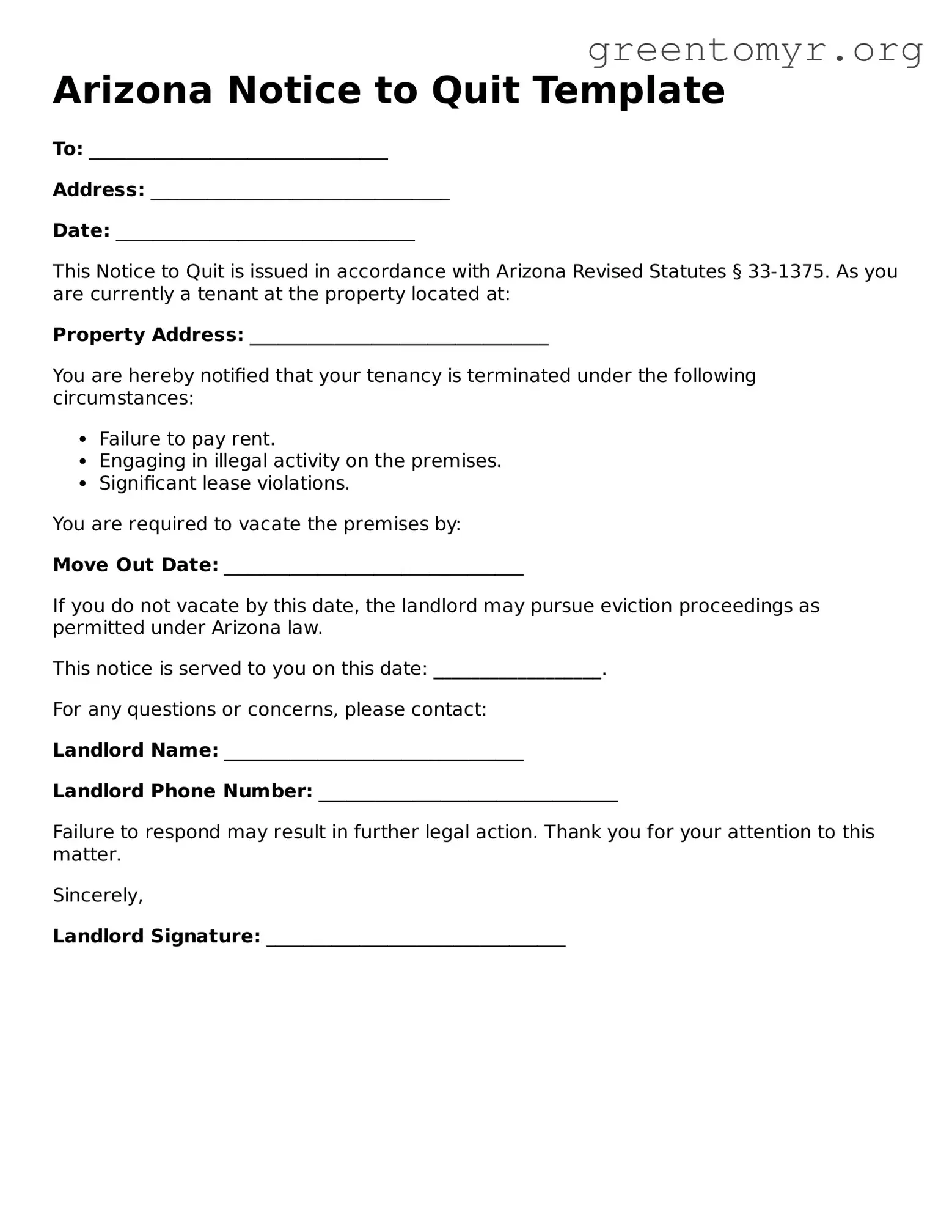Arizona Notice to Quit Template
To: ________________________________
Address: ________________________________
Date: ________________________________
This Notice to Quit is issued in accordance with Arizona Revised Statutes § 33-1375. As you are currently a tenant at the property located at:
Property Address: ________________________________
You are hereby notified that your tenancy is terminated under the following circumstances:
- Failure to pay rent.
- Engaging in illegal activity on the premises.
- Significant lease violations.
You are required to vacate the premises by:
Move Out Date: ________________________________
If you do not vacate by this date, the landlord may pursue eviction proceedings as permitted under Arizona law.
This notice is served to you on this date: __________________.
For any questions or concerns, please contact:
Landlord Name: ________________________________
Landlord Phone Number: ________________________________
Failure to respond may result in further legal action. Thank you for your attention to this matter.
Sincerely,
Landlord Signature: ________________________________
